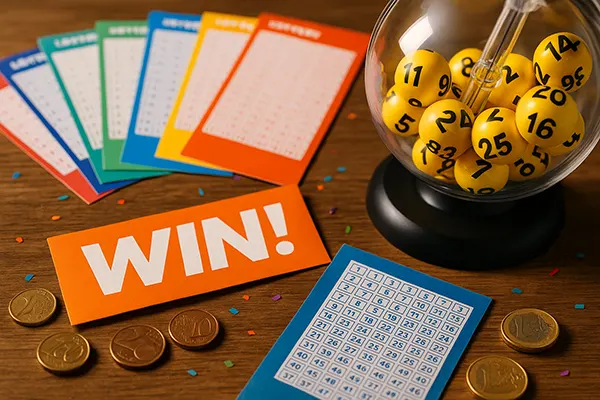
Lottery Marketing Tactics: How Operators Drive Participation and What It Means for Players
Modern lottery operators use a wide set of promotional methods to strengthen engagement and maintain interest among new and returning participants. These tactics are designed to highlight potential rewards, communicate convenience, and frame the lottery as a routine entertainment activity. Understanding how these strategies work allows players to make informed decisions based on clear expectations rather than emotional triggers.
Psychological Triggers Behind Lottery Promotion
One of the central techniques used in 2025 is the emphasis on near-miss outcomes and memorable stories of individuals who have won significant prizes. These narratives create a sense of proximity to success, even though mathematical probabilities remain unchanged. The storytelling element reinforces the belief that anyone could be next, which helps drive repeat participation.
Another common strategy is presenting jackpots as ongoing national events. Media updates, rolling prize totals, and weekly coverage help keep large draws in the public eye. By framing a draw as part of a wider social conversation, operators maintain attention without altering the underlying mechanics of the game.
Operators also make use of urgency. Limited-time draws, seasonal campaigns, and special prize tiers encourage quick decision-making. This method relies on human sensitivity to deadlines, encouraging players to act before an opportunity lapses.
How Message Framing Shapes Expectations
Marketing departments frequently frame lottery participation as a low-risk activity with a potentially life-changing outcome. This presentation focuses on affordability rather than probability, which can shape how players assess value. While the cost of a single ticket may appear minor, repeated purchases over long periods lead to cumulative spending that many people overlook.
Some campaigns focus on community benefits. National lotteries often highlight contributions to cultural, educational, or public initiatives. While these contributions are real, the messaging may encourage participation by linking the purchase of a ticket with social responsibility.
Another technique is presenting odds in simplified language. Percentages, ratios, or comparative examples can be framed to appear more accessible. Players who do not examine full statistical tables may underestimate the true likelihood of winning larger prizes.
The Role of Digital Tools and Loyalty Systems
Digital engagement has expanded significantly by 2025. Many operators now use targeted notifications, personalised recommendations, and automated reminders to prompt ticket purchases. These features rely on user data such as previous draw participation, spending levels, and preferred number combinations.
Loyalty programmes also play a key role. Operators may provide reward points, free entries, or exclusive access to additional draws. Such systems create a sense of progression, encouraging players to stay active to maintain or improve their tiered status.
Regular newsletters and tailored offers further strengthen engagement. Messages may include upcoming jackpots, the history of recent winning numbers, or limited-run prize pools. These communications keep the lottery present in the player’s mind throughout the week.
Influence of Personalisation on Player Behaviour
Personalised recommendations can increase the likelihood of impulse purchases. For instance, suggesting number sets based on previous choices or reminding individuals of unclaimed bonuses can prompt additional participation without conscious long-term budgeting.
Behaviour-based segmentation allows operators to adjust communication strategies for different audience groups. Frequent participants may receive early access to draw information, while occasional buyers might receive re-engagement offers designed to restore activity.
Automated tracking also enables operators to identify high-value players and tailor bonuses accordingly. This raises ethical questions about how data is used and whether certain groups may be more vulnerable to targeted promotions than others.

What These Strategies Mean for Players
Understanding the mechanics behind marketing methods empowers players to maintain control. Recognising emotional triggers—such as urgency, personalised messages, or appealing success stories—helps individuals separate real statistical expectations from persuasive framing.
Players should evaluate long-term spending habits rather than focusing on individual ticket prices. Keeping track of monthly expenditure creates transparency and reduces the risk of impulsive behaviour driven by promotional prompts.
It is also helpful to view loyalty programmes with caution. While rewards may appear valuable, they are structured to encourage increased participation. Approaching them as optional extras rather than financial advantages supports more balanced decision-making.
Practical Advice for Responsible Participation
Setting a fixed monthly entertainment budget and sticking to it is one of the most effective ways to avoid overspending. This prevents marketing messages from influencing unplanned purchases and maintains a healthy relationship with the activity.
Players should take time to review the official probability tables for each draw they join. Transparent information is publicly available and provides a factual basis for realistic expectations. Avoiding assumptions created by testimonials or highlighted stories leads to clearer judgement.
Another useful approach is disabling non-essential notifications. Reducing exposure to reminders or targeted offers helps maintain autonomy and supports decisions based on personal choice rather than external prompts.
